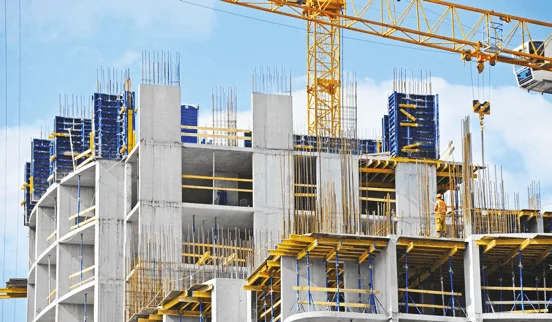As the construction industry continues to evolve, it is important to stay informed about the different types of building construction that are available. Whether you are a building owner, architect, engineer, or contractor, understanding these classifications can help you make better decisions about your construction projects. In this article, we will provide a comprehensive guide to the five different types of building construction [1][3][4].
Type I: Fire Resistive
The first type of building construction is fire-resistive. This construction type is typically used for high-rise buildings made of concrete and protected steel. The materials used in fire-resistive construction are designed to withstand fire for extended periods of time, allowing occupants to evacuate safely. The thickness of the materials used in fire-resistive construction varies depending on the height of the building.
Type II: Non-Combustible
The second type of building construction is non-combustible. This construction type is typically used for newer buildings with tilt-slab or reinforced masonry walls and a metal roof. Non-combustible construction materials are those that do not ignite when exposed to fire. Examples of non-combustible materials include concrete, steel, and masonry.
Type III: Ordinary
The third type of building construction is ordinary. This construction type is used for both new and old buildings with non-combustible walls but a wood-framed roof. The exterior walls of an ordinary construction building are made of masonry or concrete, while the interior walls and roofs are made of wood.
Type IV: Heavy Timber
The fourth type of building construction is heavy timber. This construction type is used for buildings with large timber beams and columns. The timber used in heavy timber construction is larger than the timber used in ordinary construction, providing greater strength and stability. Heavy timber construction is also known as “mill construction” because it was once used for factories and mills.
Type V: Wood-Framed
The fifth and final type of building construction is wood-framed. This construction type is used for low-rise buildings with wood-framed walls and roofs. Wood-framed construction is commonly used for residential buildings, but it can also be used for some commercial buildings.
How to Choose the Right Building Construction Type
Choosing the right building construction type is an important decision that can have a significant impact on the safety, durability, and cost of a building. When selecting a construction type, it is important to consider factors such as the building’s intended use, height, occupancy load, location, and budget. Consulting with an experienced construction professional can help ensure that the right construction type is selected for your project.
Conclusion
In conclusion, understanding the different types of building construction is essential for anyone involved in the construction industry. Whether you are a building owner, architect, engineer, or contractor, knowing the strengths and weaknesses of each construction type can help you make informed decisions about your projects. By selecting the right construction type for your building, you can help ensure that it is safe, durable, and cost-effective.

